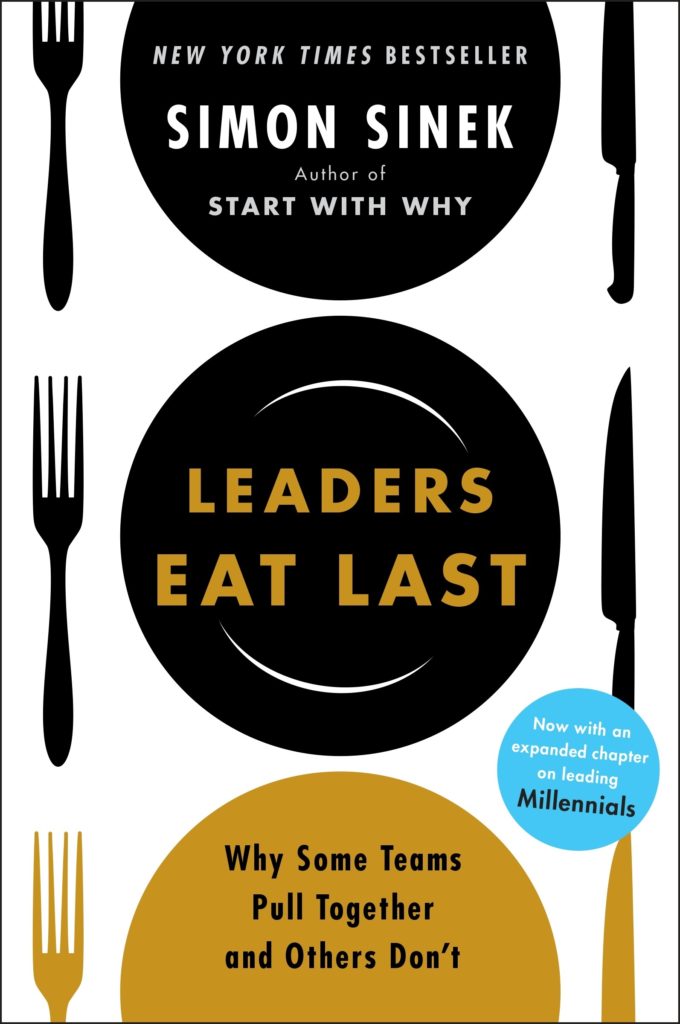 By: Simon Sinek
By: Simon Sinek
Reviewed by: Glain Roberts-McCabe
The Premise: In a follow-up to his bestseller, Start with Why, Simon Sinek explores what factors drive some employees to say “I love my job” while others approach work like they’re heading to the gallows. In Leaders Eat Last, Sinek explores how you can create an organization in which everyone is inspired to go to work, contributes their best, comes home fulfilled… and delivers results. The examples shared range from the military to investment banking to manufacturing. The primary concept of the book is the notion that individuals thrive when they feel safe in a group. And, in order for a group to feel safe, leaders need to sacrifice their own comfort and safety for those in their care. This “Circle of Safety” is what separates the security inside the team from the challenges outside. Teams who feel safe are stable, adaptive and confident; where everyone feels that their energies are devoted to facing a common external enemy. The first parts of the book set up the premise and explore how we got to where we are today by looking at the generational implications at work. Sinek then outlines some core leadership lessons needed to make the shift.
The Bottom-line: I think I have a love/loathe relationship with Simon Sinek. What I love about this book and his previous book is that he puts an interesting spin on the issues and has a way of getting you thinking… as long as you can wade through his writing to get the message. In Leaders Eat Last, one of his main provocations is that our sense of leadership has been unhinged from the core value of empathy. Our drive for results has driven over a caring for people… and our organizations are pushing this imbalance. He provides great examples that illustrate how a people-centric approach can provide better long-term results than a numbers-only approach. Jack Welch gets rightfully skewered (as he did by Jim Collins in Good to Great) and the message is that we, as next generation leaders, need to look beyond Welch and his ilk as “role models”. What makes me crazy about Sinek’s writing is that I feel like it can be summarized in a 20 minute Ted Talk. I found this book had too many stories, too much repetition around one simple central theme and too much rambling content. Looks like somebody needed to get their word count up for their publisher. Or perhaps I am afflicted with ADHD as he points out in his book. Some great ideas and an important message but not, in my opinion, a great read.
Rating: Great ideas but watch this 45 minute summary before wading through the book.


